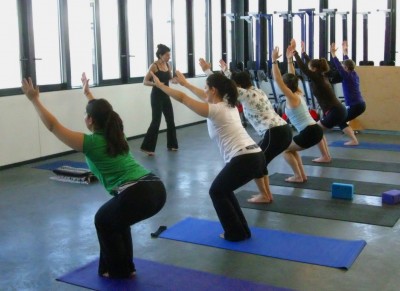We’re up to Chapter 6 in my book on yoga teaching called, Stretched: Build Your Yoga Business, Grow Your Teaching Techniques. As I’ve been doing for the past few days, every day I’m writing a summary of each chapter in the book so you can get an idea of what’s covered. I’m expecting the final copy in the mail, hopefully today so it should be available on Amazon very soon!
This chapter gives you some overall considerations as well as detailed suggestions as to how you can find a teaching job. As I mentioned in the chapter on the yoga industry, there’s never a link on a studio website to “apply here” for a job. The industry conducts itself mainly on a networking basis, with teachers finding jobs through connections with studio owners or sometimes because they have completed a teacher training program at that studio. I provide you with ideas for building this network as well as ideas for teaching in non-studio locations. As I cover in Chapter 4 on “Building Your Yoga-Preneurship,” a great strategy to have in order to help you increase your teaching revenue is to have a blend of teaching opportunities, not just those at a studio. I give you a number of non-studio locations to pursue as well as some ideas as to how to approach them.
The  second half of this chapter goes into negotiating a rate for your classes. This might seem like something only more experienced teachers do, as new teachers really need to get out there and teaching, regardless of the pay. Well, that’s only somewhat the case. Yes, you do want to get out there as soon as you’re done with your training, so yes, it might make sense to take any job that comes along. But that doesn’t mean you don’t have a rate for your teaching; it just means that you’re going to take other things into consideration ( not just pay) when it comes to evaluating a job). This is a really important factor to keep in mind as a yoga teacher because there are so many teachers out there, so individual teachers have very little negotiating leverage when it comes to the rate they’re paid. This is just a factor of the industry. However, it’s still important for you to know what you’re rate is and furthermore, when it actually DOESN’T make sense for you to take less than that. It could be in the instance of a class that’s more than 1/2 hour from your home. It could be for a class that’s a specialized one in terms of what the studio owner requires. There could be any number of factors. Bottom line: know what your rate is and be able to justify it when asked. Know when you’re willing to take less and be able to justify that to yourself.
Next Up: Chapter 7 Making the Switch from Corporate Work to Teaching Yoga Full Time.

